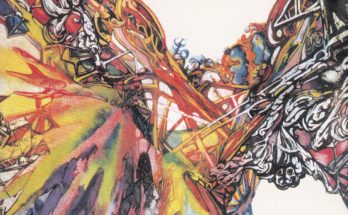By Rodrigo Diaz Guerrero
Around 2001, when I moved from a friend’s house, I realized that I had accidentally taken the book El Plan (Tierra Adentro, 1995), the first book of short stories by Luis Arturo Camarena. I remember reading it with genuine joy, having found an author who lived in my town and who captured a kind of down-to-earth realism in his disturbing stories. I was fascinated by this genre at the time.
Years later, I received an invitation from Armida Zepedato to attend the presentation of her novel, “El Apóstol” (Trópico de Escorpión, 2018). Now, years later, I come across Camarena and his work once again. In one of those unexpected twists of fate, he recently invited me to present his latest novel, “El Cancerbero de la Flama” (Trópico de Escorpión, 2019), within the framework of the International Festival of Writers and Literature. Its publication had been postponed because of the pandemic, but it will be finally released here on February 15. Readers will have the opportunity to view it and follow the trajectory of Luis Camarena’s career. It will be of great interest to avid followers of contemporary literature.
Luis Camarena unreservedly scrutinizes the drama of existence in his writing. But he is also an architect and a painter. These disciplines of space bolster his creativity, which he explains: “I got to know the work of Giorgio de Chirico because I came to him through the architecture of Aldo Rossi. Then I just didn’t know how to stop.” We met a few days ago, and between beers and Oaxacan mezcals, we had an entertaining talk. Our chat, which follows, revealed some interesting details about the book and Camarena himself that I would like to share with you.
RDG: “El Cancerbero de la Flama” is a novel that touches on various topics—fatherhood, sexual appetite, loneliness, and obsession—but, above all, it seemed to me, abandonment. It could be the story of a man jumping into an abyss, which at first seems beautiful. «Vertigo is not the fear of falling, but the desire to jump,» said Kundera. Where do you think the aesthetic lies in a tragic story? How is it that we are attracted to misfortune in literature?
LC: The underlying themes in “El Cancerbero de la Flama “are temptation and free will. I was interested in talking about [them] because there are forces that pull us down, and at a certain point, you must know, as a man, [that] the question arises whether or not you will go over to the dark side. Then, as you say, there are certain topics that are touched on with more or less intensity. Yes, paternity, definitely, and I’ll explain why. You speak of abandonment; yes, I would also say guilt. Although these topics are rather treated as a kind of psychic atmosphere. Guilt, real or imagined, is a powerful engine that leads you to self-destruction, often unconsciously. That desire to jump that Kundera talks about: My character is an ordinary being, and for that reason, he is very vulnerable to temptation. It is desire that drives him to lose himself. And it is love that makes him stop. This is where parenting exerts its stabilizing role. It is the love for the daughter that saves my character from going over to the dark side. The aesthetic that you mention is rooted in this attempt to expose a tragedy. It is rather the way that the writer chooses to deal with these underlying themes, which must be understood while the story is being told.
RDG: We talked about how literature contains [the] author’s confessions, sometimes between the lines, sometimes very explicitly, without the reader having to find out. We also discussed that the intimacy one throws over fiction tends to be secret ailments, unattended disturbances, etc. Does Luis Camarena believe that the literary exercise is also a purifying exercise?
LC: Of course! Pure exorcism. Literature can be a highly purifying exercise. Although more than confessions, I would dare to say that it is about explorations. The author is touching topics that interest us because we need to understand [them]. And by virtue of explaining it, with stories, with metaphors, with all the literary resources that we can use, we show it to the reader. Literature is the great book of understanding human nature, shredding it to understand it. I like themes that concern the common man, the antihero by definition. This type of character is very vulnerable and, therefore, a better subject for exploring these transcendental themes—temptation and free will.
RDG: What was the definitive reading that pushed you to be a writer? What are your biggest influences?
LC: The authors of the Latin American Boom, of course: Cortázar, García Márquez, Fuentes, Vargas Llosa, and so on. Although later, as time goes by, we also learn to separate ourselves from those who hold paradigms contrary to our own identity. But there is a before. By the time we discover these authors, we already bring our childhood and adolescent readings in the backpack when we discover for the first time that words could unfold vast universes on the screen of our imagination: authors like Rudyard Kipling, Edmondo de Amicis, Jules Verne, Hans Christian Andersen, Stevenson.
“El Cancerbero de la Flama” will be presented on Wednesday, February 15, at 5pm, in the courtyard of the Casa de Allende Historical Museum. It will be a pleasure to have you join us!




